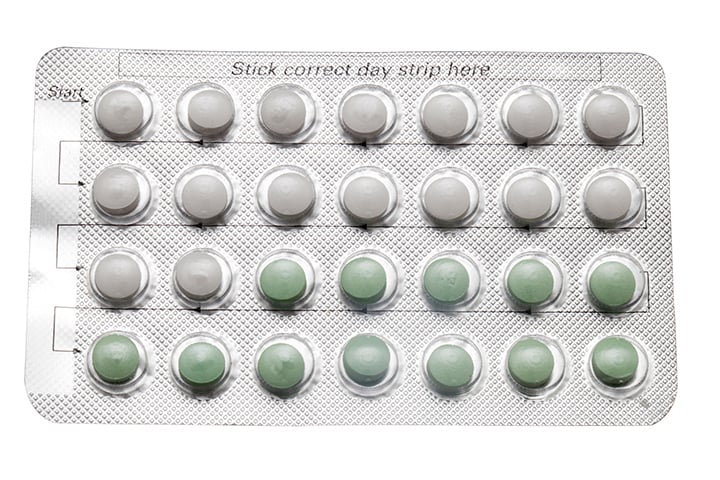Among women with BRCA mutations who underwent preventive oophorectomy, those who were younger, more educated, or had a prophylactic mastectomy were more likely to use hormone therapy to manage adverse effects of surgical menopause, researchers reported.
In more than 700 women who had an oophorectomy before the age of 50, approximately two-thirds of those in the youngest group, ages 28-37, used hormone therapy compared with about half of those in the oldest group, ages 47-49 (P=0.005), said Joanne Kotsopoulos, PhD, of the Women’s College Research Institute in Toronto, and colleagues.
As they reported in their study online in Menopause, more than 60% of participants who had a college or graduate degree used hormone therapy, compared with 46% of those with a high school education (P<0.0001). And 68% of women who had a preventive mastectomy used hormone therapy versus 56% of those who had not had the procedure (P=0.009).
“The uptake of HT [hormone therapy] after oophorectomy in women with a BRCA1 or BRCA2 mutation varies by age, education, and surgical history. Clinician and patient awareness may lead to better utilization of HT in women who undergo oophorectomy at an early age to help mitigate the adverse effects associated with surgical menopause,” the researchers wrote.
Stephanie Faubion, MD, director of the North American Menopause Society, who was not involved in the study, agreed with that assessment. “We know which women use hormone therapy and which ones tend to discontinue it more often,” she told MedPage Today via email. “This can help us target education to those who might be at risk of discontinuing the hormone therapy early. Additional research is needed to help us understand which therapies may be best for this particular patient population, but understanding use patterns can help us anticipate our patients’ needs better.”
The study results could be partly explained by “healthy user bias,” Faubion added. Women who use hormone therapy tend to be more educated about their health in general and more proactive about staying healthy, she said. “I can speculate that the ‘younger’ ones were more likely to continue use more than ‘older’ ones because they were further from being the age at which women experience natural menopause and/or may have had more severe symptoms.”
Hormone therapy use declined among women in the study from 2001 to 2015, as it did in the general population, following publication of the Women’s Health Initiative Trial in 2002. The trial reported increased risk of breast cancer in postmenopausal women who used combined estrogen-plus-progesterone hormone therapy, but not estrogen therapy alone, Kotsopoulos and colleagues said.
However, they noted, hormone therapy mitigates adverse events associated with surgical menopause that impact quality of life, such as hot flashes, sleep disturbances, mood changes, vaginal dryness, decreased libido, and painful intercourse. The acute onset of menopause after oophorectomy has also been associated with an increased risk of osteoporosis, cardiovascular disease, and possibly cognitive decline.
“Balancing breast cancer risk and menopausal symptoms as well as cardiac and bone health in young BRCA mutation carriers undergoing preventive oophorectomy represents an important clinical challenge,” the study authors said. “The existing evidence, as well as current management guidelines, indicates that estrogen-containing hormone therapy is a reasonable option for high-risk women who have undergone preventive mastectomy as well as surgical menopause.”
For BRCA1 mutation carriers with both an intact uterus and breasts, one-on-one counseling should be provided to discuss the potential increased risk with hormone therapy containing progesterone, Kotsopoulos and colleagues advised.
For BRCA2 carriers, however, the impact of hormone therapy on breast cancer risk is less clear: “However, given their propensity to develop hormone receptor positive cancers, we are left to extrapolating findings observed in the general population suggesting an increase with combined HT,” the researchers wrote.
The study included 793 women with BRCA mutations but no personal history of cancer. All participants underwent preventive oophorectomy before the age of 50 during 1994-2016. Their average age at oophorectomy was 42 (range 28-49), and minimal follow-up was 2 years. The majority of patients were from North America (63%), and most had a college, university, or graduate school degree (75%).
Overall, 483 women, or 61%, used hormone therapy after their surgery, according to their responses on questionnaires. Of these, approximately 60% used estrogen-only therapy, 26% used combined estrogen and progesterone, and 1.5% used progesterone alone. For the remaining 12% of women, the type of therapy was not indicated.
Reliance on self-reported data was a chief limitation of the study, the authors noted. In addition, they did not conduct a stratified analysis by BRCA mutation type, and did not have information on the severity of participants’ menopausal symptoms or what kind of counseling they received about hormone therapy.
The study was supported by the Canadian Cancer Society Research Institute and the Peter Gilgan Foundation.
Kotsopoulos and co-authors reported no conflicts of interest.
Primary Source
Menopause: The Journal of the North American Menopause Society
This content was originally published here.







